Experimentation
I got a little Zoom Loom to play around with, just because. I've seen some cute projects using one on Pinterest and while I don't have any definite plans for it, I wanted to get a feel for it and figure out what yarns work and what doesn't. Unless I'm completely missing something I've seen yarn weight recommended anywhere from fingering to worsted and everything in between (although some sources say worsted is too heavy). Since I wasn't sure what would work and what wouldn't, it was time to play around with leftovers in the stash!
First I tried a true worsted weight yarn. (I'm pretty sure this is a Fleece Artist yarn but I can't remember what the base is, there is some mohair in it.) Here it is straight off the loom:
and here it is after washing:
This was not an easy yarn to weave on this loom and I think it's just a little too heavy. There's no change between the freshly woven square and the washed square because there's just no room for any additional fluffing.
Next I tried a DK weight yarn. This is Cascade 220 Heathers. The Heathers in the 220 line knit up at DK weight while the solids are more of a true worsted. This was easier to weave than the first yarn, but it got more difficult at the end. Here it is fresh off the loom:
and washed:
The square tightened up a bit as the yarns settled into each other after washing. The finished square is nicely cohesive without being stiff.
The next yarn was a sport weight - Malabrigo Arroyo. Sport weight and DK weight are very close size wise, with sport being just a little bit finer. This was easy to weave and much more pleasant to work with than the first two yarns. Here it is after weaving:
and after washing:
You can really see how the yarns plumped up and relaxed into the weaving. This square has really nice drape even though it's pretty solid looking.
Finally, I tried a fingering weight yarn. I don't remember the exact details of the yarn, but it's a Fleece Artist yarn again. It was super easy to weave. Here it is straight off the loom:
and after washing:
This started out very open and pretty much stayed that way. This reminds me of those beautiful and ethereal art scarves that I love to look at, but I'm pretty sure I would snag it on something in under 10 minutes and kill it.
After all of this, I can now say that I think worsted weight yarn is too heavy for this loom, and while the fingering weight is beautiful, it's not practical for anything I would use it for. The sport weight yarn is my favorite, but the DK weight yarn was also nice and could be good for a project where I need a bit more firmness. Just as a note, the edges on all four squares look looser than the middles - that's where the yarn wraps around the pegs and you use those loops to sew the squares together for your project, so I imagine they tighten up after joining. Also, I should note that the sport and fingering weight yarns were superwash while the worsted and DK yarns were not. All of the yarns were wool or wool blends but again, I wasn't 100% consistent. I didn't follow perfect scientific method, but it told me what I wanted to know!
First I tried a true worsted weight yarn. (I'm pretty sure this is a Fleece Artist yarn but I can't remember what the base is, there is some mohair in it.) Here it is straight off the loom:
and here it is after washing:
This was not an easy yarn to weave on this loom and I think it's just a little too heavy. There's no change between the freshly woven square and the washed square because there's just no room for any additional fluffing.
Next I tried a DK weight yarn. This is Cascade 220 Heathers. The Heathers in the 220 line knit up at DK weight while the solids are more of a true worsted. This was easier to weave than the first yarn, but it got more difficult at the end. Here it is fresh off the loom:
and washed:
The square tightened up a bit as the yarns settled into each other after washing. The finished square is nicely cohesive without being stiff.
The next yarn was a sport weight - Malabrigo Arroyo. Sport weight and DK weight are very close size wise, with sport being just a little bit finer. This was easy to weave and much more pleasant to work with than the first two yarns. Here it is after weaving:
and after washing:
You can really see how the yarns plumped up and relaxed into the weaving. This square has really nice drape even though it's pretty solid looking.
Finally, I tried a fingering weight yarn. I don't remember the exact details of the yarn, but it's a Fleece Artist yarn again. It was super easy to weave. Here it is straight off the loom:
and after washing:
This started out very open and pretty much stayed that way. This reminds me of those beautiful and ethereal art scarves that I love to look at, but I'm pretty sure I would snag it on something in under 10 minutes and kill it.
After all of this, I can now say that I think worsted weight yarn is too heavy for this loom, and while the fingering weight is beautiful, it's not practical for anything I would use it for. The sport weight yarn is my favorite, but the DK weight yarn was also nice and could be good for a project where I need a bit more firmness. Just as a note, the edges on all four squares look looser than the middles - that's where the yarn wraps around the pegs and you use those loops to sew the squares together for your project, so I imagine they tighten up after joining. Also, I should note that the sport and fingering weight yarns were superwash while the worsted and DK yarns were not. All of the yarns were wool or wool blends but again, I wasn't 100% consistent. I didn't follow perfect scientific method, but it told me what I wanted to know!
Labels: weaving

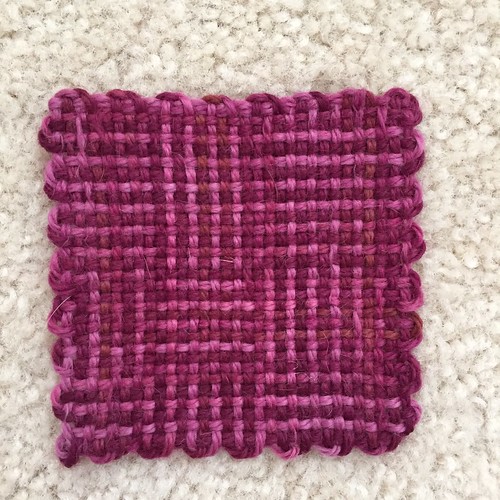
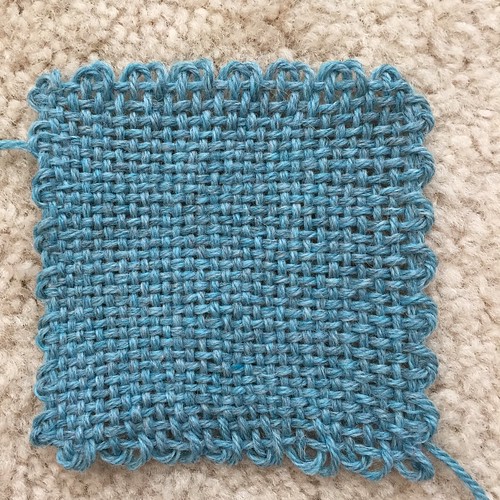
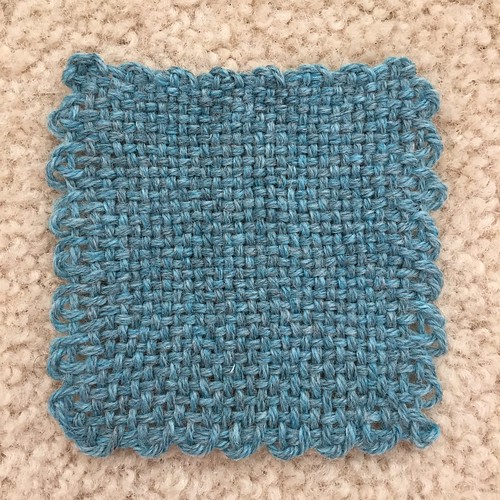
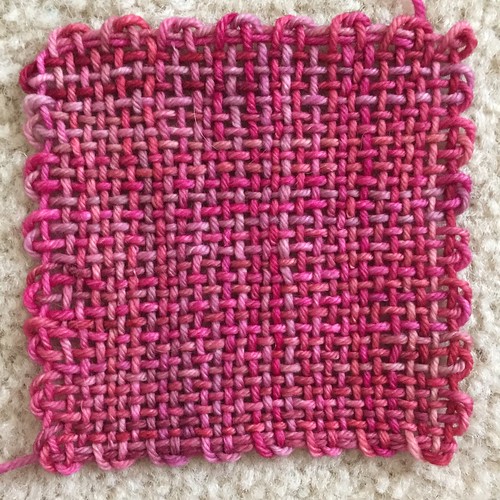

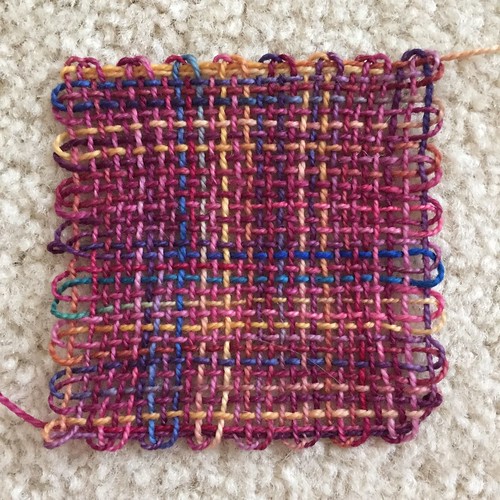
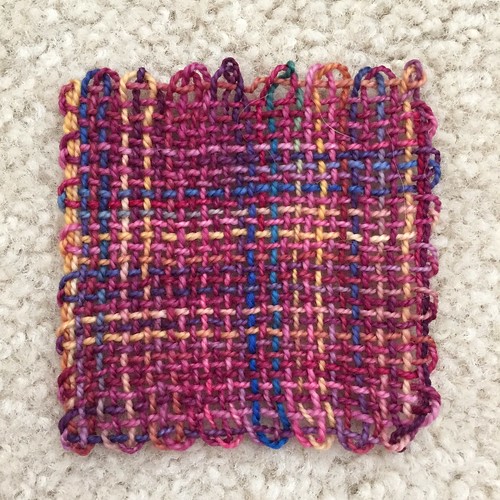
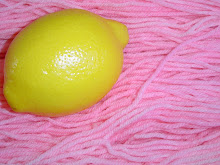






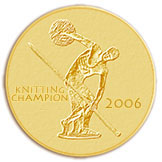


1 Comments:
Hi Melanie,
I love reading about your weaving adventures! I'm interested in trying weaving, but I don't know where to start. Any tips?
Post a Comment
<< Home